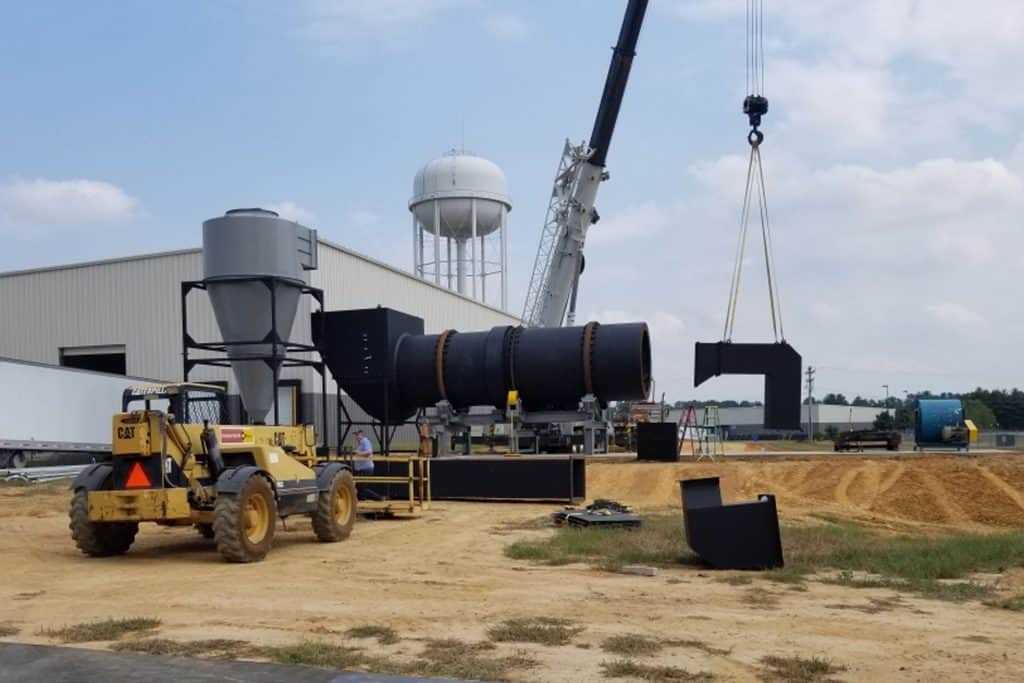In the past few years, the oil and gas industry has been booming and creating an increased demand for both natural and manmade proppants, such as ceramic beads and silica sand. Better known as “frac sand,” because it is most commonly used for hydraulic fracturing, silica sand is often the most cost-effective proppant choice and has become a growing industry in its own right.
The increase in hydraulic fracturing, or “fracking,” has resulted in an explosive rise in silica sand production in the United States. Production rose more than 62% in just five years, increasing from 30.4 million tons in 2008 to 49.5 million tons in 2012. Likewise, the price of sand increased more than 45% from $30.82 per ton to $44.78 per ton.
While silica sand can be used for numerous applications, fracking is the largest use in the United States. About 57% of all silica sand produced goes to hydraulic fracturing applications. Fracking is currently used in 90% of the natural gas and oil wells in North America.
Frac sand is mostly made up of silica quartz found in sandstone deposits around the country that have been extensively eroded. This produces rounded and spherical grains ideal for use as proppants. Frac sand is also very dense and hard, which enables it to withstand the intense pressures within the rock that would pulverize ordinary sand.
In order to be used in hydraulic fracturing operations, frac sand must meet specific standards, which are set by the American Petroleum Institute (API). Good frac sand has high silica content, is spherical and rounded, and is capable of withstanding extremely high pressures without breaking apart. The API recognized several frac sand size gradations, but 20/40 and 30/50 are generally in the highest demand.
Because frac sand must have less than one percent moisture, drying is an essential step in processing the material. A lower moisture content is also economical, as it reduces the amount of heat required in the drying process.
Either a rotary dryer or a fluidized bed dryer can be used to remove all moisture from the material. Fluidized bed dryers introduce hot air through a perforated plate to dry the product, and vibrator motors fluidize the sand for better drying. A rotary dryer, which is more commonly used, consists of a slightly inclined cylindrical shell. Lifts within the shell are used to cascade the material through the hot gas stream as it moves through the dryer.
Once the sand is washed and dried, the grains are sorted by size, most ranging from 0.5 to 1 millimeter in width. The processed sand can obtain about $200 per ton after shipping to supply hydraulic fracturing sites across the U.S.
Although oil and gas deposits cover vast areas of the country, the regions which most desperately need frac sand are mostly in North Dakota, Wyoming, Colorado, Texas, West Virginia, and Pennsylvania. The great distance between these states and those with frac sand deposits (e.g. Wisconsin, Minnesota) necessitates a vast network of transport junctions where freight can be easily moved from one transportation network to another.
In Wisconsin, an area full of silica sand deposits, state officials estimate there are more than 100 permitted sand mines, loading facilities, and processing facilities. This is up from the five sand mines and five processing plants that were operating in 2010. These sand mines and processing facilities provide frac sand to oil and gas wells around the United States. On average, it takes 25 railcars of sand to fracture one well, which is approximately 10,000 tons of industrial silica sand.
The demand for silica sand was so high in 2012, prices hit an average of $75 per metric ton. Between 2010 and 2011, sales of frac sand increased by 77%. Currently, the frac sand industry is valued at more than $1 billion in the U.S. alone.
Vulcan® Drying Systems, LLC in Moberly, Missouri, can supply a full range of equipment to dry, sort, and move frac sand. Our new and used dryers are designed specifically to dry frac sand, which makes the material easy to transport, separate, and handle. We can size and build a dryer to best suit your specific project needs. In the past, we have designed and built plants for industry clients that process 40 and 80 tons per hour.
Our Vulcan® dryer systems consist of a correctly sized drum and a burner mounted to a combustion chamber. After passing through the dryer, the dried material is discharged to a transfer conveyor for further sorting and separation. The vapor from the process is pulled through a cyclone, specifically designed to deal with the fine frac sand, as well as a high-temperature baghouse, which removes all fine particulates from the vapor stream. All ductwork, cyclone, and other high-wear areas in the system have abrasive resistant plates to reduce lifetime wear and maintenance costs.
All oversized material ore is removed from the feed stream by a Trommel Screen, which is placed in front of the feed conveyor. Heavy-Duty Conveyors transfer the material to and from the dryer system. Our conveyors can be covered to shelter the dried material from the elements.
Vulcan® Drying Systems, LLC specializes in the remanufacture and reconditioning of used equipment by incorporating used components into custom-designed solutions for specific applications like ASR. In addition to reconditioning, we also manufacture new dryer systems. Our services include setup, commissioning, training, and maintenance support services over the lifetime of your project.
The mining, processing, and shipping of frac sand has grown into a massive industry that could be called a new gold rush. Vulcan® Drying Systems offers specialized equipment to dry and process frac sand, which allows companies to take advantage of this rapidly growing industry.




